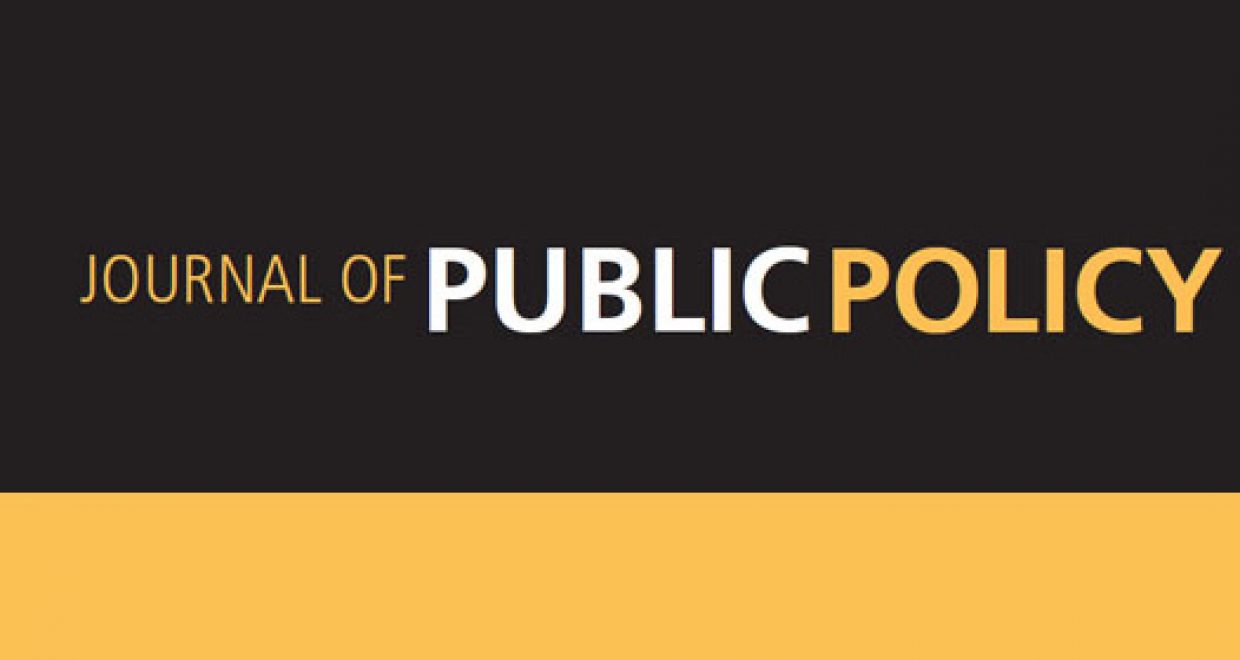Regulatory Policy Entrepreneurship and Reforms: A Comparison of Competition and Financial Regulation
Regulations and regulatory change are a political process that is the product of the interaction between politicians, bureaucrats, the general public and interest groups. To varying degrees, each of these players holds sway over shaping regulation, and the eventual policy outcome is the compromise that emerges from the interaction between them. While the literature contains extensive discussion of the interactions between politicians and bureaucrats, studies on the interactions between politicians and regulators, as appointed bureaucrats, are relatively scarce with regard to their strategies. Moreover, studies that examine regulatory change usually concentrate on the activities of groups and organizations. Consequently, there are few analyses based on the individual regulator.
In public policy literature, the theoretical framework most identified with the individual (as opposed to institutes or groups) deals with policy entrepreneurs. Policy entrepreneurship was established as a theoretical concept mainly in John Kingdon’s (1995) influential work. Kingdon’s framework considers the role of the individual within the policy process and explains why change may, or may not, occur. The literature which uses the concept of policy entrepreneurship to describe the actions of various change agents has not yet been applied to regulators. We argue that as individuals who take the lead role in policy change, regulators acting as policy entrepreneurs, change policy outcomes by adopting strategies and bringing new ideas and organizational change that help promote their agenda.
Here, it is important to stress that not all active regulators act as regulatory entrepreneurs. Most regulators prefer to perform their job in line with the mandate they receive from politicians and not “rock the boat.” In contrast to most regulators, regulatory entrepreneurs, put their own interests at risk in order to promote reforms that suits their goals. In doing so, they may go against the will of politicians and the regulated industry.
In our new JPP paper we analyze the patterns of behavior of regulatory entrepreneurs and the various strategies they use in this role vis-à-vis politicians and other players in the policy arena. Specifically, we make the case that the regulators’ ability to advance new regulations in accordance with their goals depends on their ability to identify the factors involved in the political game and leverage them towards their desired policy. We maintain that if regulatory entrepreneurs are also experts, they are much more likely to succeed. Their expertise allows them to identify problems and devise solutions more easily than other players in the arena. When regulators combine their expertise with political acumen and identify a window of opportunity, they can use it effectively to their advantage and achieve a great deal of success.
In order to study regulatory entrepreneurship, we examine our insights using two different yet connected policy domains: competition and banking regulation. Comparing regulatory entrepreneurship in these fields, both of which are very technical and require expertise but yet, are dissimilar from one another, strengthens our theoretical insights and contributes to the study of regulation. This is especially true since both regulatory reforms analyzed in this paper took place in the political arena, the Knesset (Israeli parliament). Even though the reforms occurred in two different regulatory areas, we learn that the strategies used by the regulatory entrepreneurs in question in order to push their reforms in the Knesset are very similar. Indeed, the way these reforms were achieved teaches us that in Israel, anyone wishing to be a regulator who also takes on an entrepreneurial role should follow these strategies so as to increase their chances of success.
– Hadar Y. Jabotinsky and Nissim Cohen.
– The authors’ new Journal of Public Policy article is available free of charge until the end of October 2019.






